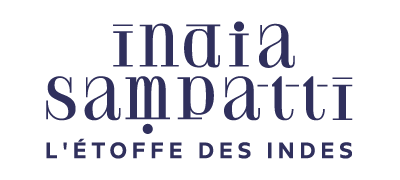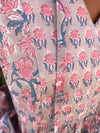
For a century, from 1680 to 1780, Indian fabrics were the most sought-after textiles in Europe, surpassing even spices as the main export commodity. The English and Dutch imported a million pieces of fabric per year, and the French about 300,000. But laws were passed prohibiting the importation of these fabrics to protect local industries. Thus, "indian" fabrics, as seen in this photo, were born: these are manufactured fabrics, particularly in France, that imitate the processes and designs of traditional Indian blockprinting, using machines.
In India, before the British Raj, weavers and other textile artisans, as a community, had considerable bargaining power with merchants. But the East India Company enacted laws prohibiting weavers from purchasing raw materials and requiring them to sell finished products only to the Company! The Indian weaving industry was systematically dismantled. In 1834, the Governor-General reported: "The bones of the weavers whiten the plains of India."
Thus, the value of India's textile exports fell by 98% between 1800 and 1860, while the value of textile imports increased by 6300% during the same period.
The Indian Textile Industry Today
Textiles are the largest generator of employment in India after agriculture. While this is reflected in GDP and export figures, it has not significantly improved the lives of farmers, hand spinners, and artisan weavers.
India is home to over 136 unique weaving styles and numerous hand-dyeing and printing techniques. Of these, around 55 weaving styles are endangered. Although India accounts for a large share of the global cotton yarn trade, its garment trade accounts for only 4% of the global total. Handloom weaving contributes nearly 15% of the country's fabric production, and India accounts for 95% of the world's hand-woven fabrics.
Although the share of handloom weaving in textile production is currently low in terms of percentage and income, it provides employment to nearly 5 million weaving families, including women in rural areas.
If the handmade textile market expands globally and nationally, it has the potential to provide employment to millions more people and become an active participant in the €900 billion global textile and clothing industry.




0 comments